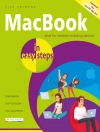Cross-technology communication (CTC) is a technology that enables direct communication between heterogeneous devices that use different wireless standards. It works like a “translator” between two or more wireless technologies. CTC not only creates a new avenue for inter-operation and data exchange between wireless devices but also enhances the ability to manage wireless networks.
This book focuses on the enabling technology CTC and introduces readers to a variety of CTC techniques in heterogeneous wireless networks. These techniques can be divided into two categories: packet-level CTCs based on energy modulation and channel intervention; and physical-level CTCs based on cross-demapping, digital emulation, and split encoding. The book offers a comprehensive comparison and analysis, granting readers a deeper understanding of CTC techniques in terms of throughput, reliability, hardware modification, and concurrency. Moreover, it highlights upper-layer CTC application scenariosand cutting-edge developments, which include but are not limited to interference management, channel quality estimation, network routing, etc.
The book is intended for all readers – e.g., researchers, students, and even professionals – who are interested in the areas of wireless networking, wireless communication, mobile computing, and Internet of Things. The findings and summaries presented here can help: 1) guide researchers to rethink CTC techniques in connection with design methodology; 2) further advance the infrastructure of future Io T by introducing CTC; and 3) enable important Io T applications by delivering ubiquitous network connectivity.
Содержание
Part I. Getting Started.- Chapter 1. Introduction.- Part II . Packet Level CTCs.- Chapter 2. Packet Level CTC based on Energy Modulation.- Chapter 3. Packet Level CTC based on Channel Intervention.- Part III. Physical Level CTCs.- Chapter 4. Physical Level CTC based on Cross Demapping.- Chapter 5. Physical Level CTC based on Digital Emulation.- Part IV. Upper Layer CTCs.- Chapter 6. Bi Cord: Bidirectional Coordination among Coexisting.- Part V. Conclusions.- Chapter 7. Research Summary and Future Directions.
Об авторе
Dr. Xiuzhen Guo is a postdoc in the School of Software and BNRist of Tsinghua University. She received her BE degree from Southwest University and her Ph D degree from Tsinghua University. Her research interests include wireless networks and Internet of Things.
Prof. Yuan He is an associate professor in the School of Software of Tsinghua University. He received his BE degree from the University of Science and Technology of China, his ME degree from the Institute of Software, Chinese Academy of Sciences, and his Ph D degree from Hong Kong University of Science and Technology. His research interests include Internet of Things, wireless networks, and ubiquitous computing.
Prof. Yunhao Liu is a Professor at Tsinghua University. He received the BS degree from the Department of Automation, Tsinghua University, and the MS and Ph D degrees in computer science and engineering from Michigan State University. His research interests include sensor networks and Io T, localization, RFID, and cloud computing. He is a fellow of ACM and IEEE.












